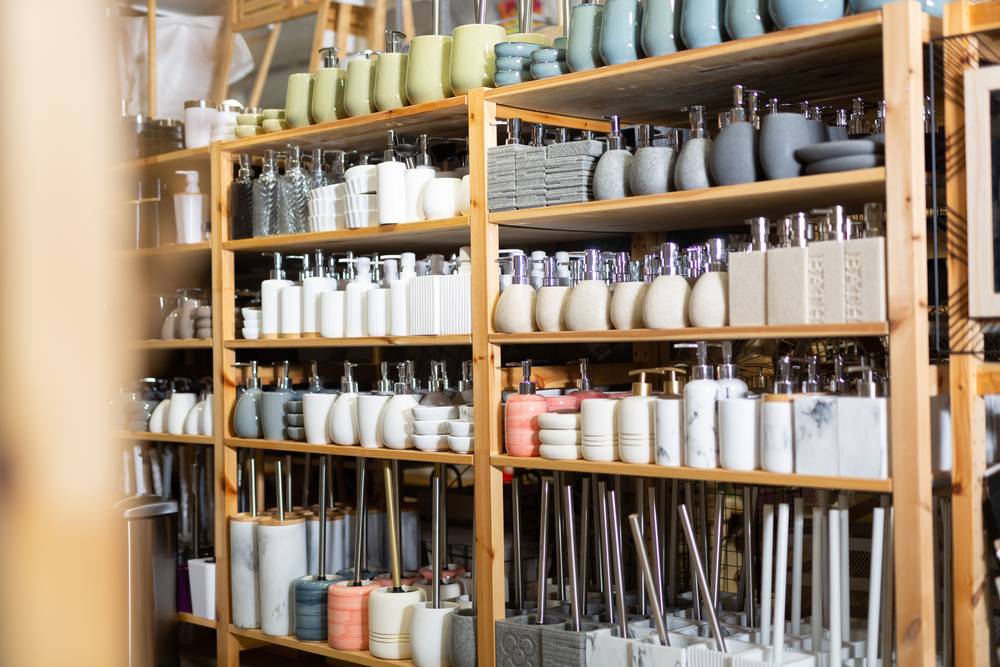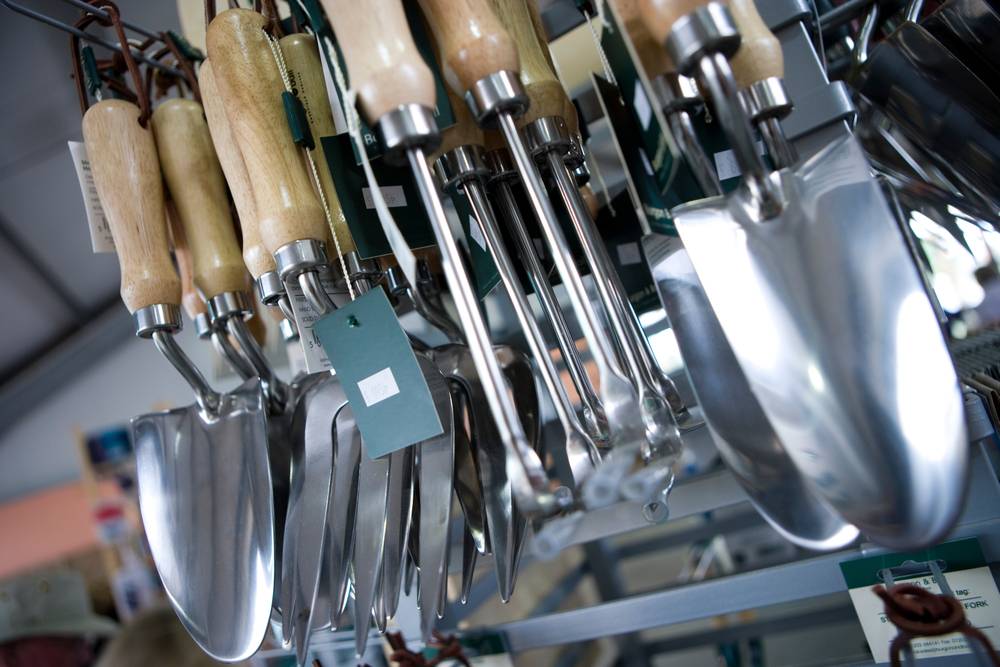If you run a retail shop, you likely see how important displays are. They’re often what attract customers to a specific area or product. Despite this, it can still be a bit tricky to understand the best ways to organize the displays. Should you stay simple or go overboard for shopper attention?

Stepping Stones to Add Entertainment Tenants
The right answer depends mainly on your brand’s personality. You don’t want to create something that goes against it. This is why you have to think out of the box.
Below, you’ll find why organization is key in retail displays. You’ll also find a few product merchandising display ideas to use.

Benefits of Good Retail Display Organization
There are countless perks that come with superb retail organization. Some of these include:
- Easy-to-find products for customers,
- A pleasant atmosphere to shop in,
- A positive outlook of your brand.
These might seem small, but they make a major difference in how you’re perceived. You’ll find the better your organization, the more fondly people will remember you. This in return can lead to brand loyalty and positive word of mouth.
10 Tips to Organize Your Displays
1. Match Your Brand’s Character
As previously mentioned, the right way to organize displays revolves around your brand’s personality. If you’re selling plants and candles, you likely want to show off cozy displays. If you’re selling sports gear, you want to display loud active scenes.
By organizing displays around your brand’s personality it will intrigue people. It helps them better understand who you are as a company. It also makes for a fun shopping experience.
2. Don’t Show Empty Space
Empty shelf space is a big no for stores. Some customers might think you’re not stocking your shelves well. It also makes what’s already on them appear jumbled and disorganized. This is especially so if customers don’t place things back where they’re supposed to be.
In fact, studies show that empty shelves have a substantial negative impact. It can deter customers from buying other products if they don’t see the main one they’re there for.
You want to make sure that the shelves look as full as possible. If that means you need to rearrange things, do it. You’ll appear more serious, and it can actually draw attention to products.
3. Rely on Lighting
Another good display organization option to remember is lighting. Adequate lighting helps customers see better. This could encourage them to spend more in your store.
Besides this, it will help them see products better. You can use lighting to direct them to certain items they might otherwise walk by.
There are a few different types you can try.
- Ambient – this is the main lighting source and should highlight all store areas.
- Accent – focuses on specific sections to bring awareness to them.
- Decorative – an aesthetic option to add character.
- Task – used often for finding things or seeing better (like at the cash register).
Lighting also doesn’t have to be traditional bright yellow. Be creative with it. You could use colored bulbs for certain places. You might also want to invest in bulbs with low lumens to create warmth. The right look will depend on your brand’s theme and how you want to display yourself.
Make sure not to make things too bright or dark, though. These can have the opposite effect and could deter some customers.
4. Use Signs
It might seem that signs could clutter things, but they are excellent for organizational purposes. They’ll help shoppers find areas or products quickly.
Keep in mind to use signs wisely. Too many can clutter things. Make signs for main spaces and for special areas that might be on discount or have exclusive products.
Be sure that your signs are also decorative and creative. A bland one gets the point across but isn’t as fun. People are more likely to enjoy and appreciate shops that go all out to create an experience.
5. Put Discounted or Exclusive Items Up Front
Another organization tip is to make a display near the entrance of discounted or unique items. Because this will be one of the first things people see when they enter, they’re more likely to browse through it.
But don’t just throw items on the shelves. Place them thoughtfully and make a fun display to catch attention. If shoppers see how you treat the items with care, they’ll be intrigued to learn why you think they’re worth buying.
6. Consider Traffic
One element some brands forget is foot traffic. Certain products can be more popular than others. If your aisles are too narrow or situated closely they can create chaos.
To make good displays, consider the layout. Situate shelves in a particular way that prevents crowds and gives shoppers room to explore.
There are a few organizational layouts you could try.
- Grid – often used in major stores to display essential items. It situated shelves along walls and in vertical lines.
- Free-flow – featured in specialty shops and shows off displays in circular and angled patterns.
- Diagonal – situates shelves at diagonal angles for better visibility.
- Loop – relies heavily on wall space and acts like a maze, so customers flow in one direction.
- Forced-path – similar to loop to encourage flow in one direction, but is a bit more technical and ideal for showing off larger objects.
7. Keep Expensive Objects at Eye-Level
Another interesting display organizational tip is to put pricey items at an eye-level area. This is usually on a middle shelf. By doing so, it will be one of the first things that catches someone’s attention. This could make them more inclined to buy it.
8. Put Top-Performing Items in the Back
To entice customers to spend more time in your shop, place essential or popular items toward the back. This will force them to walk through your store to them. Along the way, they might see things that interest them. This could encourage more purchases.
9. Create Curated Displays
You might also want to make themed displays. For instance, instead of just putting shirts out, add other things that could go with them. If it’s for the summer, add seasonal items that could match the shirts. This could be flip-flops, shorts, and hats.
Doing this can actually attract attention for a few reasons. One is that it makes people curious. They want to see what things could potentially go with certain items – all of which might inspire them.
Besides this, it makes it easier for them to get what they need. Instead of walking through the entire store to find matching items, they’re in one place.

Stepping Stones to Add Entertainment Tenants
10. Monitor Things
If you’re not sure whether your organizational ideas will work, keep an eye on them. Test out certain layouts and elements to see how customers interact with them. If you notice problems, like poor traffic flow, quickly address them.
You want to be actively working to ensure your retail displays are organized to fit buyers’ needs. Otherwise, you could lose shoppers. If you want to get insight into a customer’s experience, send out surveys that ask for their opinion.
Good organization is key to superb retail displays. Not only does it better display your products, but you can attract customers to new items. By keeping these tips in mind, you can create stunning retail displays.
For more information, please refer to the following pages:
- How to Make a Brand That Customers Recognize
- Tips for Incorporating Your Brand Into Your Products
- Guide for Making Your Products Stand Out
- How to Optimize Your Store Layout
- What Is the Business Strategy Behind a Pop-up Store?
- Why Is Retail Merchandising Important?
- What Is a Merchandising Job?
- Steps for Merchandising Your Products
- How to Put the Customer First in Your Products
- 10 Reasons an Optimized Store Layout Leads to More Sales
- How to Boost In-Store Brand Engagement
